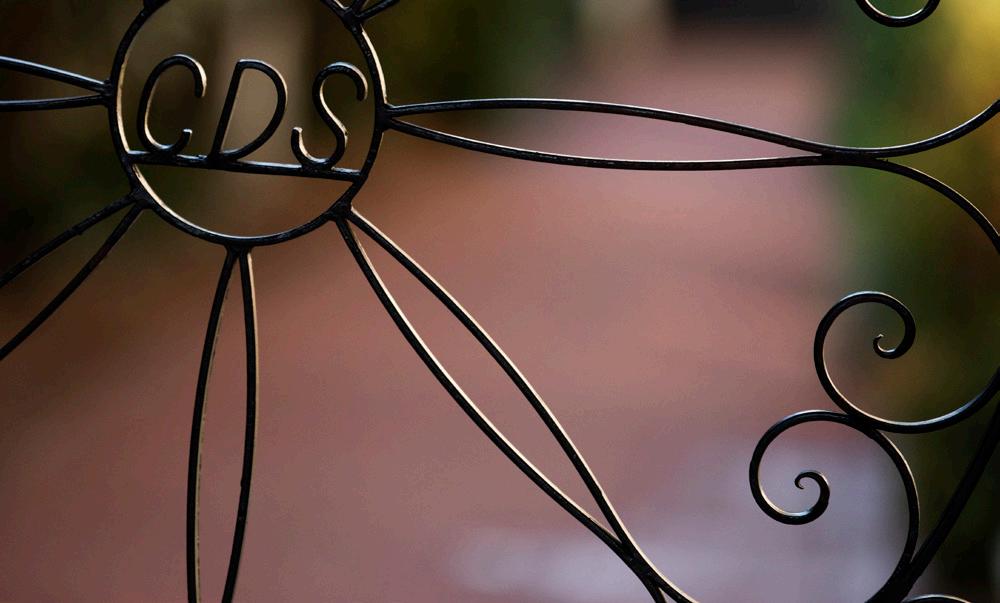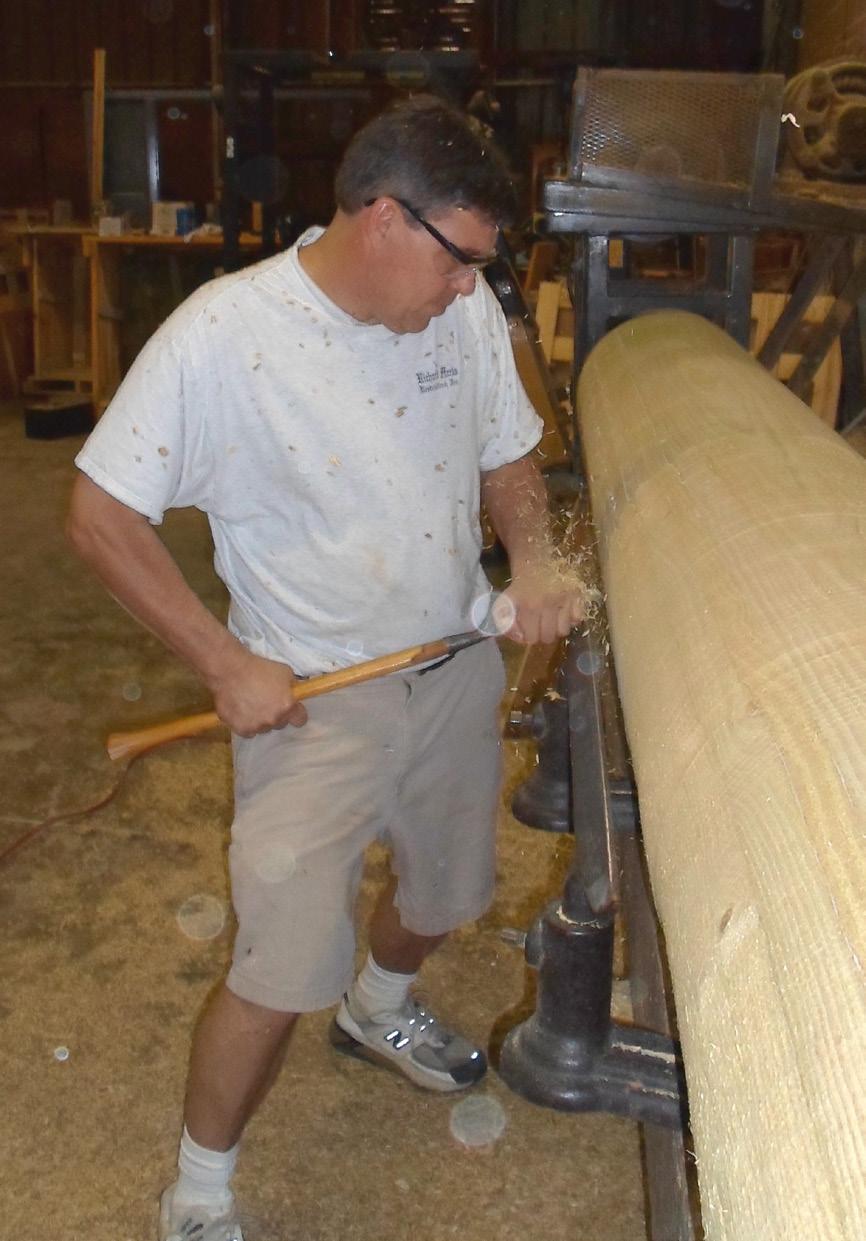
5 minute read
BEYOND THE GATES: ALUMNI SPOTLIGHT Richard “Moby” Marks III ’77
1. As the owner of Richard Marks Restorations, Inc. you have restored many properties. Do you have any favorite or most memorable projects over the years? What are you working on now?
We have had the pleasure of working on all of the museum houses in the area, many historic churches, public buildings and private residences. My favorite projects have involved all aspects of preservation--archival research, on site investigation, archaeology, conservation science and the fabrication and installation of missing elements. Some of our most challenging projects have been the Market Hall and County Courthouse stone restoration, The 1820’s Fireproof Building, The 1710 Old Powder Magazine, the dismantling, moving and reassembly of The 1815 William A. Alston House and the old Navy Base Chapel. Currently we are working on The John Ravenel House, The Charles Edwards House and The Judge Robert Pringle House.
Advertisement

Moby works to restore a column using traditional techniques.
2. What led you into this career? What sparked your interest, and what educational path did you take?
I grew up in Albemarle County, Virginia, near UVA and Monticello. I was inspired at a young age by Jefferson and his architectural, scientific and engineering abilities. I have always loved working with my hands, investigating and drawing old buildings and reading books on history. When we moved to Charleston in 1973, I had wonderful teachers at the Charleston Day School, like Cheves Leland. She not only wrote our textbook and taught SC history, but also took us on field trips to historic sites. She made history come alive in the classroom.
I went on to Porter Gaud High School and worked summers for a local contractor on Sullivan’s Island. I also renovated several homes with my father on Sullivan’s Island and in the Old Village of Mt. Pleasant. I studied Architecture and Construction Science at Clemson University and began Richard Marks Restorations in 1985. In 1994, I kept fifteen employees and ran five projects while I attended graduate school at the University of Pennsylvania. I studied Historic Preservation and Architectural Conservation. My goal was to set up a conservation lab in 1995 to provide better services for our clients and the local preservation community. In 2000 I started teaching ‘Building Pathology’ in the undergraduate program in Historic Preservation at the College of Charleston. In 2003 I stopped teaching undergraduates and worked with Clemson to start a graduate School in Historic Preservation at a satellite location in Charleston. I have taught every student in the program over the past fifteen years and our students are involved with many of our projects throughout the city.
3. Which aspect of the restoration process do you enjoy the most? Is it researching the history of a property, meeting the unique challenges of reconstruction, the artisanship that restores a property’s true character, or something else?
Our work often takes us back in a time machine. We are put in the place of the original artisans, and we make objects as they were created 200 to 300 years ago. I love not only the research and the discovery process, but also the creative process of learning traditional skills and how best to use modern technology. My work is never stagnant, there is always more to know.
4. Would you tell us about your work that was featured on Bob Vila’s “Home Again’’ television show?
In 1994 I was asked by Bob Vila if he could film one of our Charleston projects from start to finish. He filmed nine episodes of his show at our 54 Montague Street restoration. As his first project in Charleston, he wanted to showcase the city and other great buildings in the area. He filmed three more of our projects at 6 Thomas Street, 60 Montague Street and The Nathaniel Russell House.

A restored ceiling medallion in a Charleston historic property.
5. How did Charleston Day prepare you for what you are doing now? What are your favorite memories of CDS as a former student, former parent, and former Trustee?
Charleston Day School has remained a large part of my life for the past 47 years. I started in the fourth grade and many of my best friends are CDS alumni. I have fond memories of playing four square, basketball, field trips canoeing with Ned Jaycocks, and racing to East Bay Playground after school. Ned was still headmaster when our children attended and they also benefited from his leadership and vast knowledge of the natural world. Our three children Richard, Morgan and Louise each spent eight great years there. I was on several school committees before becoming a Trustee for ten years. My wife, Margi, has worked at the school for ten years and adores her time with the students, faculty and parents.
6. Charleston Day School is uniquely situated in historic Charleston and within walking distance of many historic buildings. Might you offer some addresses you’ve restored within a walking radius that students might be able to observe?
The students only need to walk a few blocks to see some of the best 18th and 19th century architecture in America that we have had the honor to work on. They range from the earliest buildings like the 1710 Powder Magazine, the 1750’s Branford-Horry House, the 1770’s Old Exchange, and the 1790’s County Courthouse, to the 1809 Nathaniel Russell House, the 1820’s Fireproof Building, the 1840 Market Hall and the 1850’s Catholic Cathedral of St. John the Baptist.
7. Has your relationship with Charleston deepened as a result of your work on its historic structures?
When you work to preserve and restore old buildings and sites in Charleston you become very protective of the unique nature and fragility of the historic district. I see rapid growth and alterations to old structures that ultimately leads to loss of historic fabric and loss of character. My work strengthens my resolve to protect Charleston and its history.
8. Do you have any free time, and if so, what do you choose to do with it?
My favorite free time is spent traveling to historic towns, woodworking, hiking, biking or boating.

Margi, Louise, Richard, Morgan and Moby Marks in Tahoe, 2017.
9. What advice would you have for a CDS student?
I would advise all CDS students to follow their passion. It is true that when your work is enjoyable and fulfilling, it is not like work.
10. Last question: Red or Blue - which are you?
I was RED !






